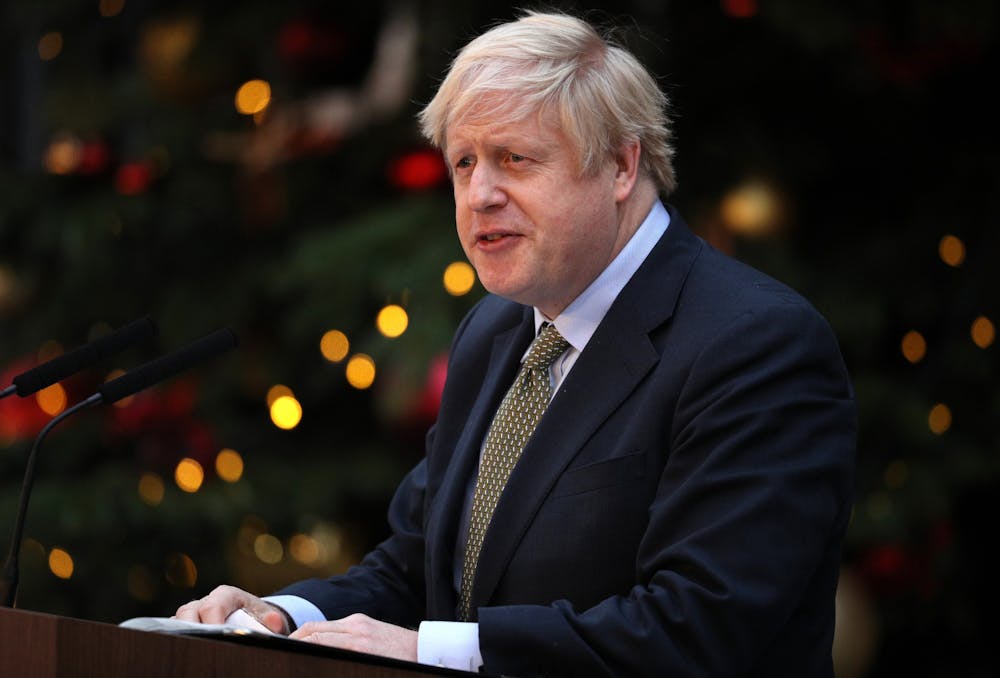Thursday’s United Kingdom election ended in disaster for Leader of the Opposition Jeremy Corbyn’s Labour Party and delivered the Conservative party, led by Prime Minister Boris Johnson, a powerful majority in Parliament. In the United States, politicians and party strategists shared the lessons that they learned in Labour’s defeat.
“Look what happens when the Labour Party moves so, so far to the left,” former Vice President Joe Biden said at a Thursday night fundraiser.
Voting patterns, polls and recent history suggest that Biden and other moderates are learning the wrong lesson for 2020.
Centrist Democrats are characterizing the Tory victory as a wholesale rejection of Labour’s left-wing platform. Former New York Mayor Michael Bloomberg and former Rep. John Delaney, D-Md., joined the frontrunner in expressing this sentiment. Bloomberg called the results a warning for the Democratic Party in 2020, while Delaney released a statement saying that it “proved that mainstream voters will not embrace an extreme economic plan.”
Obviously, these primary contenders have a clear interest in drawing such conclusions. If they can convince Democrats that Labour lost because it went too far left, then they may be able to bleed support from the campaigns of progressive Sens. Elizabeth Warren, D-Mass., and Bernie Sanders, I-Vt., .
By a slim margin, the U.K. voted to leave the European Union in 2016. Over three years later, and it's still in the E.U. That is likely to change now that the Conservatives hold 365 of Parliament’s 650 seats, placing them comfortably in the majority.
Johnson and the Conservatives cemented Brexit at the center of their campaign, promising to finally reach a deal, leave the E.U. and bring stability back to British politics. Corbyn and Labour, meanwhile, devoted significantly more attention to their economic proposals, such as nationalizing major utilities.
Under a similarly radical platform, the Labour Party fared much better in the U.K.’s 2017 election. At that point, they deprived the Conservatives of an outright majority, won 40% of the vote compared to the Conservative’s 42.4% and added 30 seats. This alone disputes the narrative that Labour’s left-wing policies led to its downfall in 2019, but it fails to capture the whole picture.
The Brexit vote divided Labour’s constituency and left them attempting to appease supporters on both sides of the “Leave/Remain” debate. In 2017, Labour campaigned on honoring the results of the E.U. referendum, preferring to seek a favorable, worker-oriented deal with Europe. In 2019, however, the party took a slightly bolder stance. They promised to reach a deal with the E.U. and then put it back to the British public for a second referendum.
“Who is going to negotiate it?” Johnson asked during a BBC debate with the Labour Party leader. “Because as far as I can see everyone on the Labour front bench is campaigning for ‘Remain’ apart from Mr. Corbyn, who is neutral on the matter.”
Johnson’s argument attracted “Leave” voters that traditionally supported Labour. In Thursday’s election, the Conservatives managed to flip 54 Labour seats. The vast majority, 52 of them, had voted “Leave” in the 2015 referendum. Losing a total of 59 seats, this constitutes the bulk of Labour’s defeat and highlights the differences surrounding Brexit between 2017 and 2019.
The prime minister made a convincing case to this bloc of voters, claiming that Labour took its support for granted and that Corbyn was now attempting to reverse its vote to leave the E.U. The results reflect his success.
Labour’s historic defeat cannot be attributed to Brexit backlash entirely; Corbyn was also a deeply unpopular candidate. The U.K. pollster Opinium asked former Labour voters who backed the Conservatives to list why they did so. The poll found that 45% cited party leadership, while another 31% switched due to Labour’s Brexit stance. Only 6% voted Conservative because of Labour’s economic proposals.
In areas that voted “Leave,” reservations about the party’s leader and a suspected Brexit double-cross compounded into a nightmare scenario for Labour. While the party’s vote share decreased from 2017 nationwide, it hemorrhaged seats where residents supported leaving the E.U. Compared to the 52 seats lost to the Conservatives in such areas, Labour lost only eight seats and gained one in pro-“Remain” constituencies.
Without the context of Brexit and Corbyn’s personal unpopularity, the observation that voters rejected Labour because they moved “so far to the left” does not withstand scrutiny and lacks useful application in the U.S.
American politics, for all of its divisions, has no equivalent to Brexit threatening to permeate the 2020 election. Sure, the question of impeachment will dominate headlines and appear prominently in stump speeches and debates, but its support is split along party lines. This is quite unlike Brexit driving a schism between two factions of the Labour Party.
Additionally, progressive candidates in the U.S. do not share many of Corbyn’s liabilities. Both Warren and Sanders have positive favorability ratings, and neither have been enmeshed in substantive political scandals. This is in contrast to Corbyn, who faced accusations of anti-Semitism throughout his campaign.
Moderate Democrats are wrong to believe that the election’s results vindicate their position. There are certainly lessons to learn in Labour’s defeat, but polling and voting patterns do not substantiate the claim that the party went too far left for the electorate’s liking. Centrist candidates would do well to debate their progressive counterparts on even ground, abandoning whatever self-serving hunch they feel about the U.K.’s election.






